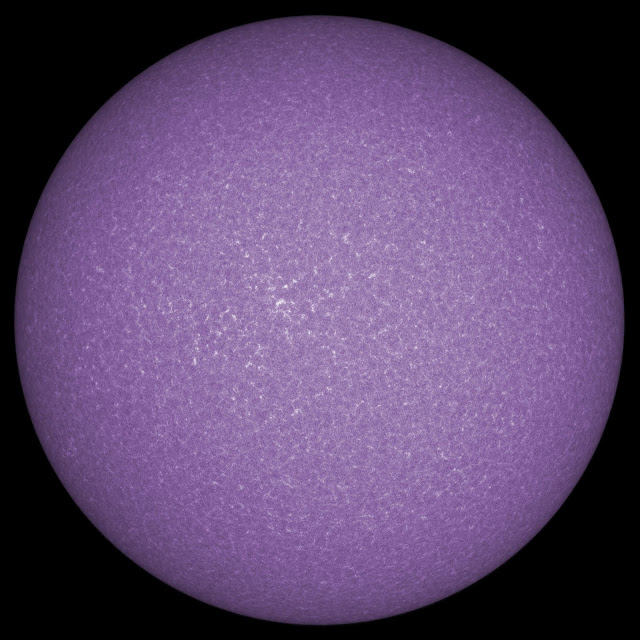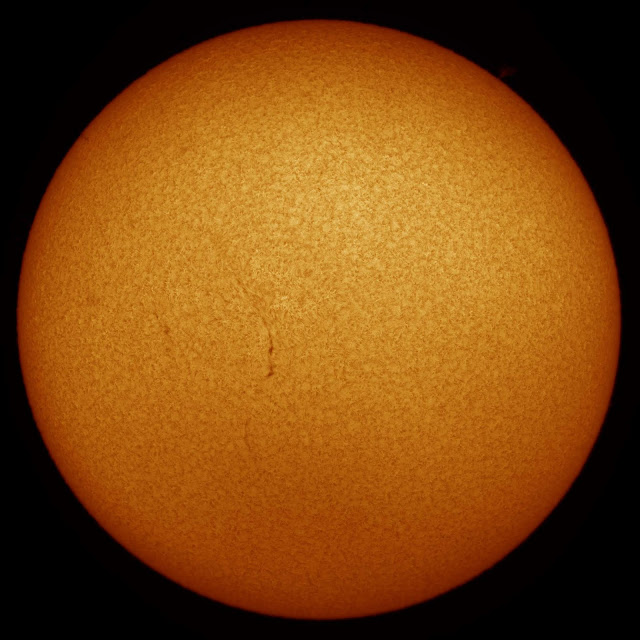There be a storm coming in today! However was up early and out ready to beat the rapidly approaching bands of clouds. Only managed a full disk, Lunt50 etalon double stacked with the Quark, 0.7x telecompressor and the FLIR GH3 ICX916M camera.
There's lots happening on our star today! there are whole load of lovely proms, and with turbulent plage and filaments mid disk from the active regions we had back in April, also look carefully in the northern hemisphere mid latitudes, a feint but most definite line of filaments is there - this marks out the solar jet stream associated with where we will first see cycle 25 giving us activity. At the moment the field strength there is less than 1500 gauss (the limit accepted for spot formation) and so we see filaments being the dominant magnetic feature, but as the field strength gets more in the months ahead we should expect an increase in the magnitude of features associated.







































